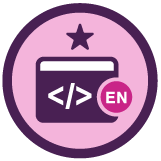Introduction
Welcome to this Course for Developers in English
Communicate with your customer accurately
Customer-oriented requirements
How iteration cycles work
Planning considering priorities
Review: communicate with your customer accurately
Understand your customer and the requirements
Prioritizing requirements
Backlog and Milestone 1.0
Organize your tasks!
Organizing your time into user stories and tasks
Stand-up meetings, analyze and design
Review: organize your tasks!
Create deliverable design
Creating deliverable design
Refactoring, meetings and release
Protect your very valuable software
Understanding the principles of defensive development
Functional and unit testing
Review: protect your very valuable software
Understanding Continuous Integration (CI) and testing
Types of software testing
Handle accidents when building the code and what CI means
Test your Software!
TDD Test-Driven Development
Review: test your software!
Be ready for the end
Prepare for the next iteration
End an iteration
Fix your bugs!
Handle bugs to fit your process
Continuous integration test delivery method
Review: fix your bugs!
Conclusion
We've come to an end!
Expert Mentorship
Você não tem acesso a esta aula
Continue aprendendo! Junte-se e comece a impulsionar sua carreira
Se você já tem uma conta,

Review: protect your very valuable software
15/25Hagamos un nuevo repaso de los conceptos previamente estudiados.
| Concept | Definition |
|---|---|
| Refactoring your design | Refactoring is the process of modifying the structure of your code, without modifying its behavior. |
| SRP Single Responsibility Principle | Every object in your system should have a single responsibility, and all the object’s services should be focused on that single responsibility |
| Refactoring and Standup meetings | Refactoring is the process of modifying the structure of your code, without modifying its behavior. |
| DRY Don’t Repeat Yourself | DRY is about having each piece of information and behavior in your system in a specific, single place. The DRY principle is a principle of Software Development aimed at reducing the repetition of information of all kinds. |
| Definition is done | When everything is complete, then you have a definition, it’s done. |
| Ship out / Release Software with Quality and Value | Your Software must always have awesome quality and awesome value, aim at Perfection, and settle for Functionality. |
| Defend your software from yourself and your peers | Test Driven Development (TDD) is all about writing your code with testing in mind. It’s about writing tests before any code and letting these Tests drive your Implementation. |
| Technique #1 - Version Control with your code repository | Version Control is a great technology you can use, it’s one of the best Defensive tools. Version Control lets you create a repository to keep your code in a single place to ease backup and recovery. |
| Technique #2 – Control your dependencies | You need to find a way to keep things independent, but work together at the same time to make testing easier. You need to find a way to apply Independent Tests. Create Mock Objects to do this. |
| Functional Testing | Your tests need to guarantee your Software’s optimal Functionality. |
| T_echnique #3 – Always Exercise your Code-Unit Testing_ | Unit testing is all about creating tests that run automatically to test the smallest components of the code for their business logic. |
| Technique #4 – Let your peers understand your Code-Document it! | To form your Customers of any changes you have made to the code, document your changes and analyze them along with your peers. Keep them informed with reasons. |
Todos estos conceptos están relacionados con el cuidado profesional de tu software. Procura emplear algunas técnicas de cuidado del código fuente de tu proyecto, lo agradecerás en el futuro.
Contribución creada por Kevin Fiorentino con aportes de Erwin Alan Frías Martínez.
Contribuições 0
Perguntas 0
Quer ver mais contribuições, perguntas e respostas da comunidade?